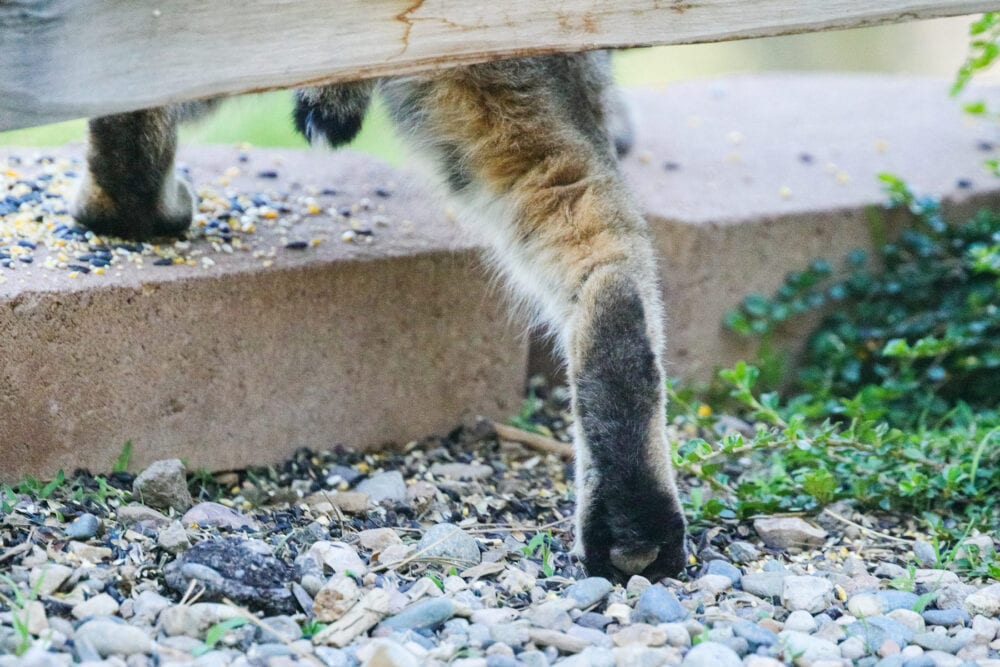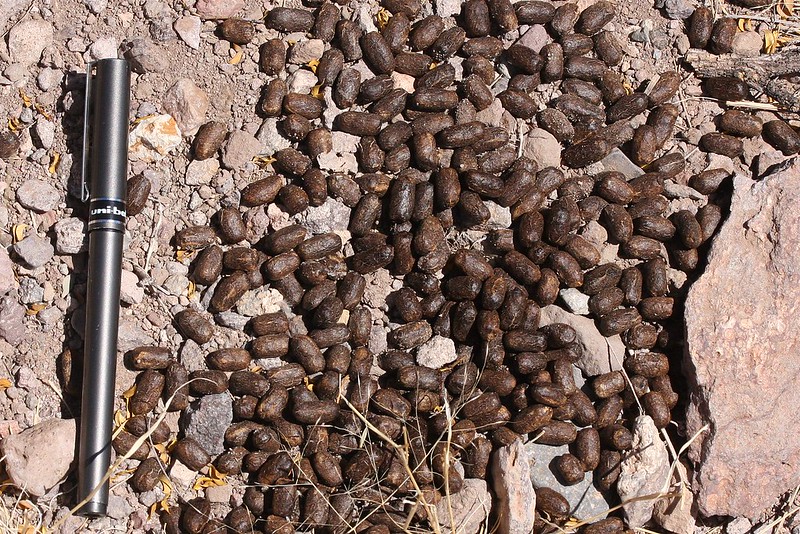
By Mariana Rivera Freeman
If you’ve been hitting the trails as much as I have lately, you’ve likely come across a lot of animal scat, tracks, and trails. Collectively, we call these spoor, or signs. It can be a fun exercise to search for and follow animal signs when you’re exploring the outdoors, and you can learn much from these little (or sometimes big) calling cards our wild neighbors leave behind. Not only can you determine what species of animal you’re looking at, but also which direction the animal was going, how quickly it was moving, whether it was alone or with company, and, with scat, what the animal likes to eat.
Identifying tracks in the wild doesn’t require many tools, gladly. Keeping a track and scat guide in your pocket is a quick and sure way to identify signs, but you needn’t carry books with you as long as you have some way to capture an image of the track, and a ruler or other item for scale. If you don’t have a camera, you can bring your nature journal or scrap paper to capture the likeness of a track or scat — the way naturalists have done for centuries!
No image is complete without scale, as it’s impossible to determine the exact size of a track without it. Hence the measuring tool. You can use a small ruler to get immediate measurements, or you can improvise and use something that can be measured later. Coins work great for this purpose, as well as keys, pencils, bobby pins, mostly anything. A word of warning, however! Be careful in the case of scat not to drop your measuring tool into the poop! I offer this great wisdom from personal experience.
Now that you have your equipment, you’re ready to do some detective work. Let’s start with tracks.
Tracks
Every wild animal has its own unique footprint, and defining the shape of that print (which we call a track) is usually the easiest way to identify species. Snow and mud are best for this. But in the presence of an ill-defined track (which is almost always the case), you can also turn to size to further pinpoint species. This is why a measuring tool is so important! A mule deer track, for example, won’t be larger than 3¼” long; in contrast to an elk track, which can measure up to 4¾” long.
Check out PEEC’s online Track Guide to learn more about the species you’ll see locally.
If you’re lucky enough to find a trail of tracks and you happen to have measuring tape, or you simply enjoy hiking with a yardstick, measuring the stride of an animal can also help differentiate species. Stride is measured from the heel of one foot to the heel of the next foot in the trail. A mule deer’s stride (the distance between prints) will typically be 24”, for example, while an elk’s stride can be double that length. The animal must have been ambling, however, for you to measure precise strides.
Scat

If it’s your lucky day, you may find some scat in the trail. This is our much-dignified word for animal poop. Whether with tracks or without, you can use the shape, size, and contents of scat to differentiate wild species. This is especially true of mammals, whose diets are more widely varied.
Shape is perhaps the most important consideration when it comes to scat. You’ve likely come upon piles of poop pellets on the trails, for example. These pellets can be round or oval, they can be piled like pebbles or squashed in a clump. Regardless, if you find pellets you are looking at rabbit, deer, elk, or even bighorn sheep.
Size and ingredients of the scat are good determinants as well, though size and diet differences between juveniles and adults of the same species can cause some confusion. But your measuring tool will come in handy again if you can’t quite decide how small or big the scat is. Fox and coyote poop can look a lot alike, for example. Both animals have tubular scat that usually tapers at the end, and both may have fur and berries or other components of an omnivorous diet. Coyote scat, however, can reach 4” long; while fox scat is generally no longer than 2”.
Whether you’ve found a gooey dinner-plate sized dropping (likely a bear) or a palm-size pile of tiny pellets (likely a rabbit), there’s one rule you must always follow! Never touch the scat with bare hands. But do take a twig and poke at that poop, for investigative purposes of course!
A Last Thought
If after all your measurements and detective work, you’re still not sure what animal you’re tracking, knowing a little about behavior and ecology (an animal’s relationship with its environment) can be a huge help.
For example, squirrel tracks typically lead from tree to tree, and under or along logs. You’re more likely to find elk tracks in a grassland than deer. You may look around and see claw marks where a bear scraped a tree. Remember to look up and around, too, and you may spot signs you’ve never noticed before!
